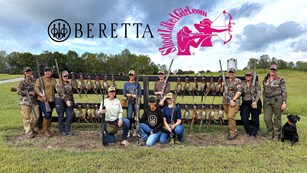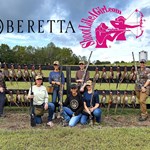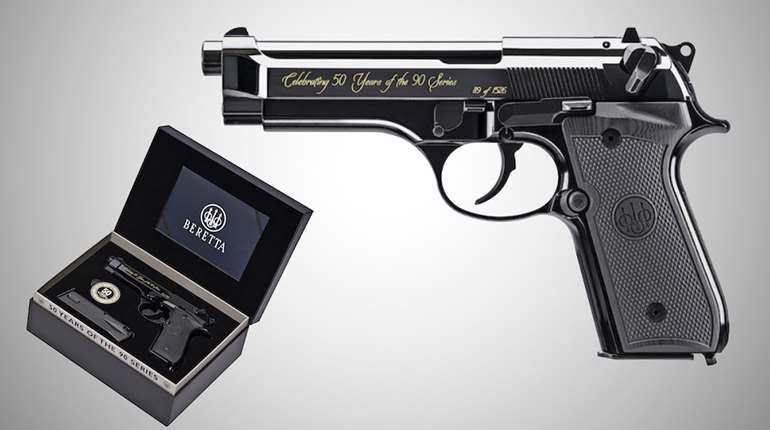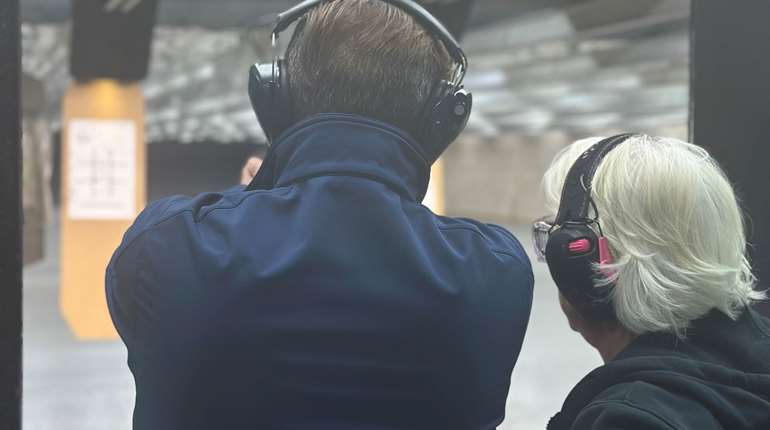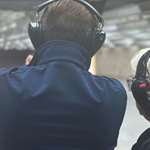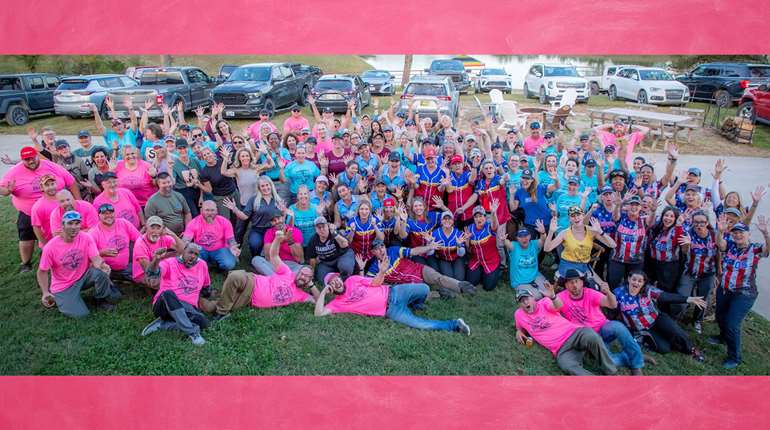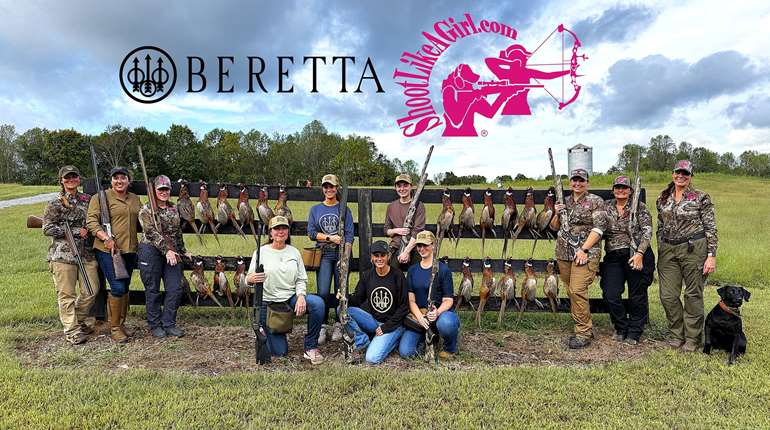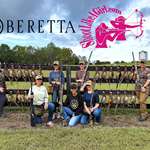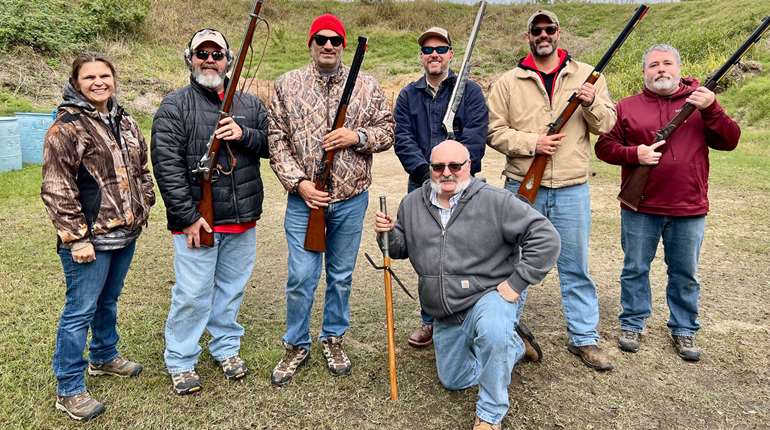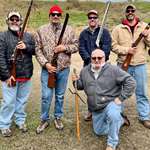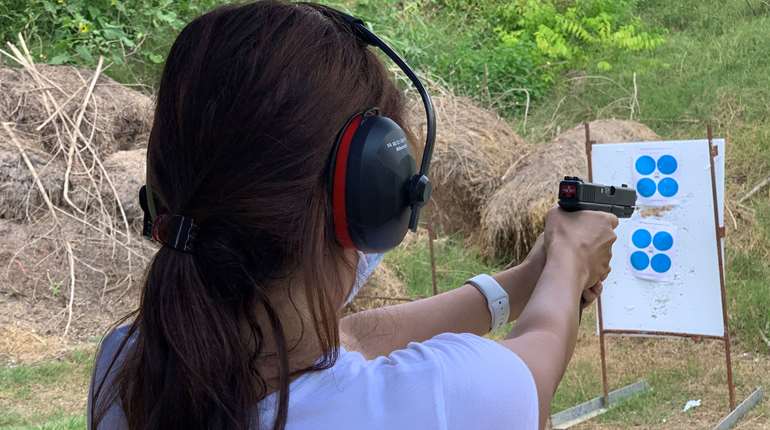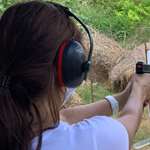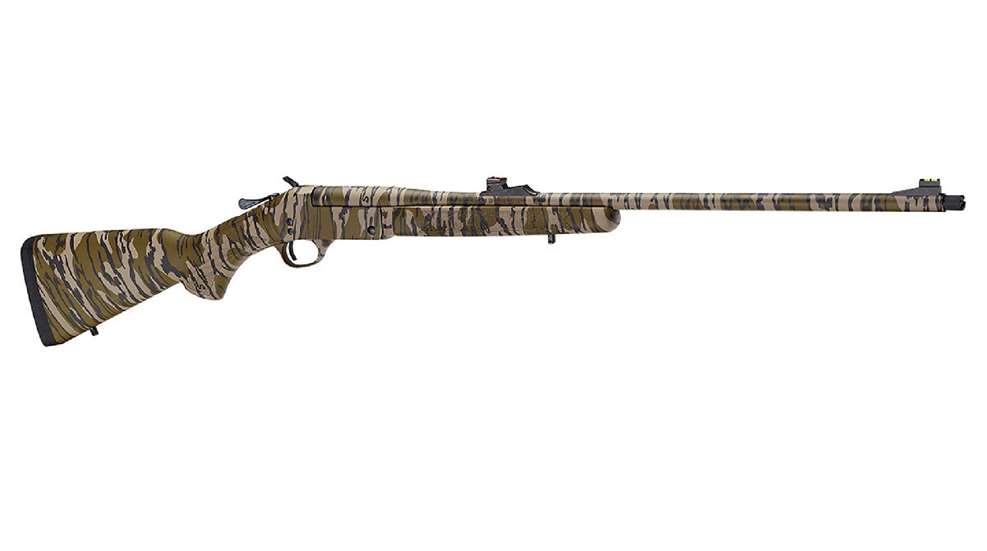
In 2017 I had my first opportunity to work with Henry Repeating Arms’ top-notch series of break-action, single-shot rifles and shotguns. Many of the one-shot options on the market today are made to be budget-friendly. And while they do work, some models are, how shall we say it—less than elegant. When Henry got into the single-shot business it brought its passion for high-quality, American-made firearms to the platform. As a result, these guns are adult-size, handsomely crafted and something folks can take pride in owning.

Turkey guns chambered for .410 Bore shot shells have been gaining in popularity over the last few years.
Late in 2024, Henry caught up with the long time customer requests for dedicated Turkey hunting shotguns. This recently released series includes two models. The H015T-12 is a 24" barrel 12-gauge chambered for 2.75", 3" and 3.5" shells with a Mossy Oak Obsession overall camouflage finish. The other option is the H015T-410 chambered for 2.5" and 3" .410 Bore shells with a 26" barrel and a Mossy Oak Original Bottomland finish. The .410 version is the subject of this evaluation.
Manufactured here in the United States at Henry's Rice Lake, Wisconsin, facility, this turkey gun is a variation of the company's H015-410 break-action .410-bore single-shot that is built around a steel receiver. The most notable difference is the turkey version's total coverage in a Mossy Oak Obsession camouflage finish. The blued-steel appointments and the soft rubber recoil pad blend right in.

This model has been treated with an overall Mossy Oak camouflage finish.
Most of the other turkey hunting modifications are found in and around the 26" round-profile, smooth-bore barrel, which is chambered for 2.5" and 3" .410-bore shells. The muzzle is internally threaded to accommodate Invector-style removable chokes. In this case, the typical flush-fit Full choke has been replaced with an extended Turkey choke. Additional choke tubes sized for this gun are available through Henry's online store.
The traditional brass bead front sight has been upgraded to a bright green/yellow rifle style blade sight. The front sight is paired with a bright orange 2-dot square notch rear sight that is height adjustable. For those who prefer to use red-dot or magnified optics, the top of the chamber is drilled and tapped to support Weaver 82 type optics rails. The last, but certainly not the least, turkey gun upgrade is a set of sling swivel studs with one set into the fore-end and the other mounted to the underside of the shoulder stock.

The American walnut stocks lend the single-shot an authoritative heft and good balance.
Although they can't be seen through the camouflage, the checkered fore-end and shoulder stock are shaped from the same American walnut as Henry's other single shots. This provides a stabilizing heft that's typically absent from hollow polymer stocks. The hardwood shoulder stock places more weight back at the shoulder giving this gun a well-balanced feel. The stock is capped off with a textured soft rubber recoil pad and provides a 14" length-of-pull (LOP).
Moving back to the receiver assembly, this shotgun employs a rebounding hammer which also serves as the external safety. After the hammer falls forward to fire a cartridge, it rebounds by locking back and away from the firing pin. In this position the hammer is blocked from moving forward, in case it is bumped, and the trigger is also locked so that it cannot be cycled. Before the gun can be fired again, the hammer is manually cocked for the next shot.

The ejector kicks out spent cartridge cases to clear the chamber for a fresh round.
The tang-mounted barrel release is a dual-direction lever for ambidextrous operation. It can be pressed to either the right or the left to open the action, which is a thoughtful feature since most release levers for guns in this class only move in one direction. The barrel's chamber features a spring-loaded ejector which vigorously kicks spent shell casings out and over the shoulder of the person using the gun.
Many shotgun makers are using polymer trigger guards these days. But Henry opted to fit this gun with a more durable metallic guard. The curved, steel single-action trigger exhibited a single-stage trigger feel, meaning there is no take-up when it's pressed. Instead, it provided a firm resistance before breaking cleanly with 4-lbs. 1-oz. of trigger pull.

The height-adjustable rear sight is fitted with bright orange fiber optics.
During a recent writers’ event, I had an opportunity to chat with an associate who is an avid turkey hunter. During the course of our conversation, I asked him why he thinks single-shot .410-bore turkey guns like this one have gained in popularity, and the reasons he chooses to use one himself. His answers lined up neatly with what I've heard from other fans of the platform and my own experiences in working with these specialized shotguns.
The top reason for switching from a 12 gauge or a 20 gauge to a .410-bore shotgun is the notable reduction in levels of felt recoil. With some defensive loads a .410’s recoil can sneak up into 20-gauge range. But I have yet to see this happen with any of the birdshot loads, including the most potent 3" shells made in this caliber. The combination of the smaller .410 shell fired from a break-action single shot provides for a slim, svelte shotgun which is handy and easy to use for hunters with varying levels of skill and experience. But what about quick follow up shots? Wouldn't it be better to have a double-barrel or a pump-action shotgun? Folks in the know point out that turkeys are challenging prey due to their alertness and wary nature. In most cases, if the first shot misses then the turkey will be gone before there's time for a second.

The bright green fiber-optic front sight rests over the extended removable Turkey choke tube.
But what about shot-pellet pattern density? The .410 cartridge contains relatively small payloads of birdshot, especially when compared to larger gauges. As for the turkey, its head is roughly 2" wide and 3" long with a neck that's also 2" wide and around 8" long. If you draw an 8" circle with the turkey's eye at the top and the turkey's body at the bottom, the center of the circle is where hunters are looking for a dense pattern of shot pellets to affect a quick and ethical kill.
The use of .410s for this kind of hunting didn't start to pick up speed until a few years ago when ammunition companies began offering specialized turkey loads. Among the forerunners was Federal Premium Ammunition with its Heavyweight Tungsten Super Shot (TSS) 3" shell.

Single-shot .410-bore shotguns like this one have a slim, handy profile.
The TSS is filled with 13⁄16 oz. of buffered #9 size pellets loaded to a listed velocity of 1100 f.p.s. These pellets are 95 percent tungsten, which gives them a density of 18 grams per cubic centimeter. This makes them 20 percent more dense than standard tungsten pellets, or 56 percent more dense than typical lead pellets. This means that even though the #9 pellets are small, they hit hard and penetrate more deeply than lead pellets of a similar size.
Reducing the size of the pellets to a #9 diameter allows for a higher pellet count which in turn works to address the pattern density question. The TSS shell can hold up to two times as many pellets as lead loads of the same weight. The cartridge I cut open ahead of the range session contained 285 pellets. The two other lead birdshot loads tested included a Federal #6 shot which contained 143 pellets and a Winchester Super X #4 shot with 104 pellets.

Specialized shells designed specifically for turkey have boosted the popularity of .410-bore shotguns for this hunting endeavor.
Even though the TSS load has a pellet count advantage, it all comes down to pattern density. Launching more pellets won't make much of a difference if there are not enough of them landing in the strike zone. It is also a fairly expensive load to use. As of this writing, five-round boxes of this TSS are listed for $52.99, or nearly $11 per shot once you roll in the sales tax. It would be helpful to know if it lives up to the hype before making the investment.
With this in mind, I headed to the shooting range where formal pattern testing was conducted at 25 yards using the turkey choke provided with the shotgun. Rather than mounting an optic I took advantage of the tall, bright, factory installed fiber optic sight set. Individual shots were fired into 34.5" x 22" Official IDPA Practice Targets with the 8" central circle serving as the strike zone. The pellet marks within the circle were then counted to see what percentage of the payload landed effectively.

Two lead birdshot loads were tested in addition to the TSS shell to compare differences in pattern density.
It’s not uncommon with any type of firearm for the point of impact to shift a bit when changing loads. If the center of the pattern appeared to shift above or below the target’s circle, then the plan was to flip the target over, draw an 8” circle around the center of pattern so as to make sure each shell’s pellet count was accurately represented. In this case, both lead shot shells produced central impacts while the TSS load hit about 3" below the point of aim with the sights in their factory setting.
The first cartridge tested was Federal's Hi-Brass 3" shell loaded with 11/16 oz. of #6 lead birdshot at a listed velocity of 1135 f.p.s. In this case, there were 46 of this shell's 143 lead pellets inside the circle for about a 32 percent strike rate.

Next up was the Winchester's Super X 3" shell launching 11/16-oz. of #4 lead birdshot leaving the muzzle at 1135 f.p.s. For this round, 30 of its 104 lead pellets landed in the circle for roughly a 29 percent strike rate.

The last round of the test was the Federal TSS load with its 13⁄16 oz. of buffered #9 dense tungsten pellets traveling at 1100 f.p.s. Of the 285 pellets, a total of 188 passed through the central circle, or it patterned with about a 66 percent strike rate. Yep, that ought to do the trick!

Henry Repeating Arms' single-shot .410-bore turkey gun brings together the features hunters are looking for in a high quality and enjoyable to use package. Despite its purpose-built design, this shotgun can fill a variety of roles thanks to an interchangeable choke and flexible sighting system options. It can be put to work harvesting upland game, small game, training new shooters and for pest control around the property. For more information about this and other Henry single-shot rifles and shotguns, visit henryusa.com.

Specifications:
Manufacturer: Henry Repeating Arms
Model: Single Shot Turkey Camo Shotgun (H015T-410)
Action: Break-Action Single Shot
Finish: Mossy Oak Original Bottomland Camouflage
Caliber: .410 Bore; 2.5" or 3" Shells
Barrel: 26"
Sight: Rifle Type 3-Dot Fiber Optic, Adjustable rear
Stocks: American Walnut
Overall Length: 41.5"
Length of Pull (LOP): 14"
Weight: 6 lbs. 10.4 oz., Unloaded
Capacity: 1
Choke: Invector Interchangeable; Extended Turkey Provided
Trigger Pull: 4-lbs. 1-oz. (As Tested)
Accessories: Lock, Owner's Manual
MSRP: $1,031.99






